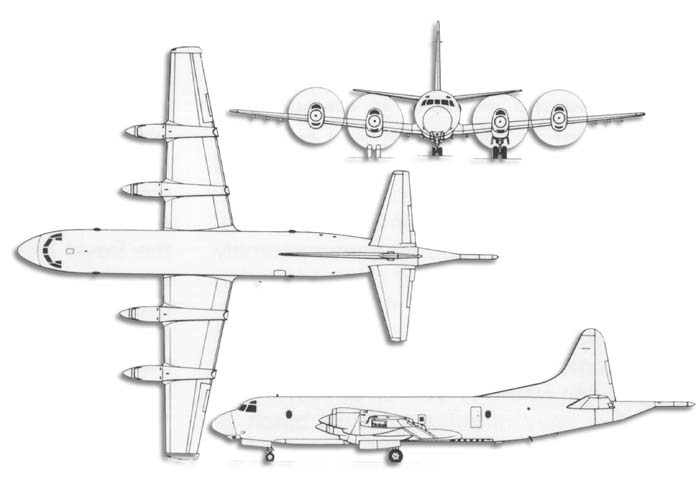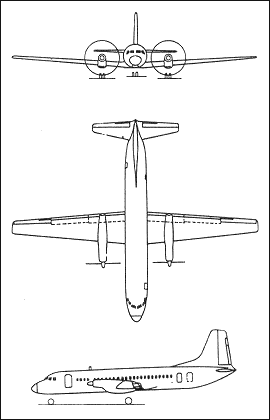http://en.wikipedia.org/wiki/Lockheed_L-188_Electra
..................................................................

http://en.wikipedia.org/wiki/P-3_Orion
.................................................



Moderatore: Staff md80.it







Anche a me, il rombo dei pistoni era musica per le mie orecchiecabronte ha scritto:Quanto mi mancano i quadrimotori a elica!








cabronte ha scritto:Notare le marche...

Ma l'unico 767 ad essere winglettato non è quello dell'AA?i-daxi ha scritto:Bello, a me piace, mi piacciono gli Embraer, tra l'altro leggevo che il più popolare tra i suoi Turboelica il 120 Brasilia doveva avere i winglet di serie che poi in realtà non vennero montati, sarebbe stata per il tempo un idea innovativa.
A proposito di winglet volevo aggiungere questa curiosa immagine:

Non solo AA e Austrian. Guarda che belli quelli di Delta!Marco 1101342 ha scritto:Ma l'unico 767 ad essere winglettato non è quello dell'AA?i-daxi ha scritto:Bello, a me piace, mi piacciono gli Embraer, tra l'altro leggevo che il più popolare tra i suoi Turboelica il 120 Brasilia doveva avere i winglet di serie che poi in realtà non vennero montati, sarebbe stata per il tempo un idea innovativa.
A proposito di winglet volevo aggiungere questa curiosa immagine:
Però il 767 winglettato è proprio stupendo!


A chi lo dici!i-daxi ha scritto:Ciao
Belli davvero grazie e anche i Brasilia
Sarebbe splendido vedere i 767 con le winglet anche con le registrazioni o i colori nostrani

Davverocabronte ha scritto:A chi lo dici!i-daxi ha scritto:Ciao
Belli davvero grazie e anche i Brasilia
Sarebbe splendido vedere i 767 con le winglet anche con le registrazioni o i colori nostrani

Altrettanto!i-daxi ha scritto:Davverocabronte ha scritto:A chi lo dici!i-daxi ha scritto:Ciao
Belli davvero grazie e anche i Brasilia
Sarebbe splendido vedere i 767 con le winglet anche con le registrazioni o i colori nostrani
Buona serata



Infatti era un aereo molto affascinante, ma sicuramente avrà avuto qualche pecca di progettazione!i-daxi ha scritto:Peccato sì, a me in realtà é sempre piaciuto anche per la particolarità innovativa dei quattro reattori in coda su un aereo all'business a lungo raggio.

Possibilecabronte ha scritto:Infatti era un aereo molto affascinante, ma sicuramente avrà avuto qualche pecca di progettazione!i-daxi ha scritto:Peccato sì, a me in realtà é sempre piaciuto anche per la particolarità innovativa dei quattro reattori in coda su un aereo all'business a lungo raggio.


Mi sa di si!i-daxi ha scritto:Oppure costi di gestione e di produzione troppo alti.


No, non ci siamo dimenticati. Nel mondo dell' aeronautica ci sono stati tantissimi "flop", quindi è solo una questione di tempo. Se hai tempo puoi fare tu una bella recensione su questo aereo!Peretola ha scritto:Mi sembra impossibile che nessuno si sia ricordato di lui



Ipotesi sul disastro .....Peretola ha scritto:
..... fu protagonista anche di un grave incidente al Salone aeronautico di Le Bourget nel 1973: a causa di una manovra brusca, mentre il pilota cercava di richiamare, l'aereo si spezzò .....
Filmati .....Da Wikipedia .....
Paris Air Show crash
At the Paris Air Show on 3 June 1973, the development program of the Tu-144 suffered severely when the first Tu-144S production airliner (reg 77102) crashed.
While in the air, the Tu-144 underwent a violent downwards maneuver. Trying to pull out of the subsequent dive, the Tu-144 broke up and crashed, destroying 15 houses and killing all six people on board the Tu-144 and eight more on the ground.
The causes of this incident remain controversial to this day. A popular theory was that the Tu-144 was forced to avoid a French Mirage chase plane which was attempting to photograph its canards, which were very advanced for the time, and that the French and Soviet governments colluded with each other to cover up such details. The flight of the Mirage was denied in the original French report of the incident, perhaps because it was engaged in industrial espionage. More recent reports have admitted the existence of the Mirage (and the fact that the Russian crew were not told about the Mirage's flight) though not its role in the crash. However, the official press release did state: "though the inquiry established that there was no real risk of collision between the two aircraft, the Soviet pilot was likely to have been surprised."
Another theory claims that the black box was actually recovered by the Soviets and decoded. The cause of this accident is now thought to be due to changes made by the ground engineering team to the auto-stabilisation input controls prior to the second day of display flights. These changes were intended to allow the Tu-144 to outperform Concorde in the display circuit. Unfortunately, the changes also inadvertently connected some factory-test wiring which resulted in an excessive rate of climb, leading to the stall and subsequent crash.
A third theory relates to deliberate misinformation on the part of the Anglo-French team. The main thrust of this theory was that the Anglo-French team knew that the Soviet team were planning to steal the design plans of Concorde, and the Soviets were allegedly passed false blueprints with a flawed design. The case, it is claimed, contributed to the imprisonment by the Soviets of Greville Wynne in 1963 for spying. Wynne was imprisoned on 11 May 1963 and the development of the Tu-144 was not sanctioned until 16 July. In any case, it seems unlikely that a man imprisoned in 1963 could have caused a crash in 1973.
Altre ipotesi .....On 3rd June 1973 the Tu-144 programme suffered its first serious setback.
The first production example (CCCP-77102) crashed in the Parisian suburb of Goussainville during a demonstration flight at the 30th Paris Air Show, and the true cause of the accident remains a mistery.
After a series of very tight turns - the usual antics which airliners perform at airshows but not in real life - the Tu-144 climbed steeply, then inexplicably dived and broke up in mid-air when trying to recover, bursting into flames as it fell.
The entire crew (captain M. V. Kozlov, co-pilot V. M. Molchanov, deputy chief designer V. N. Benderov, flight enginner A. I. Dralin, navigator G. N. Bazhenov and engineer B. A. Pervookhin) died on the spot.
An accident investigating panel consisting of Russian and French specialists was set up to determine the cause of the tragedy.
The panel found no technical failing, but ascribed the accident to several human causes.
These where the presence of unsecured members of the crew in the flightdeck, the unespected appearance of a French Air Force Dassault Mirage III fighter in the pilots' field of view (the theory is that the fighter pilot came a bit too close to the Tu-144, the latter's pilots took violent evasive action and overstressed the aircraft) and the fact that one of the crew was holding a cine camera which might have fallen and become wedged against the control column.
Taking all this into account, such a conclusion suited everyone.
Eduard V. Yelian later commented in the 1990s that "this catastrophe was a bitter reminder of how a number of what at first seem trivial acts of carelessness - in this instance by the French flight control - can have tragic consequences".

Purtroppo non so moltocabronte ha scritto:No, non ci siamo dimenticati. Nel mondo dell' aeronautica ci sono stati tantissimi "flop", quindi è solo una questione di tempo. Se hai tempo puoi fare tu una bella recensione su questo aereo!Peretola ha scritto:Mi sembra impossibile che nessuno si sia ricordato di lui

Tra i flop, come li intendiamo ora, aggiungiamo pure il B747 SP, il bimotore ad elica regionale Nord 262, il Comet (funestato come sappiamo da numerosissimi incidenti), anche il Tristar venne battuto, sebbene non di molto dal DC-10, il supersonico sovietico Tupolev Tu-144, lo stesso Concorde per il quale vennero ritirati ordini da un numero di compagnie ben maggiore rispetto alle sole 2 che conosciamo e che lo utilizzarono effettivamente, il Douglas DC-5 e il suo progenitore DC-2 e il Fokker-614, primo Jet commerciale costruito dall'industria olandese.Peretola ha scritto:Mi sembra impossibile che nessuno si sia ricordato di lui:
Tupolev Tu-144
Doveva essere l'alternativa sovietica al concorde e invece...
Solo 10 anni di servizio (1968-78) con Aeroflot, fu protagonista anche di un grave incidente al Salone aeronautico di Le Bourget nel 1973: a causa di una manovra brusca, mentre il pilota cercava di richiamare, l'aereo si spezzò.
Che peccato, guardate quant'è bello!


come diavolo avrebbero potuto trasformarlo in un intercettore!!?!?richelieu ha scritto:DP-2 Long-Range Heavy Interceptor

Un attimo di pazienza ..... che scrivo .....87Nemesis87 ha scritto:come diavolo avrebbero potuto trasformarlo in un intercettore!!?!?richelieu ha scritto:DP-2 Long-Range Heavy Interceptor


Questo è tutto .....DP-2 Long-Range Heavy Interceptor
In the late 1970s the OKB contemplated a heavy interceptor derivative of the Tu-144D designated DP-2 (dahl'niy perekhvahtchik - long-range interceptor).
Actually it was more than just an interceptor; its mission was to escort 'friendly' strike aircraft on long-range missions, protecting them from enemy fighters, provide air defence of key areas within a large radius from its base and disrupt the enemy's air supply routes, seeking and destroying enemy transport aircraft.


quoto!!! lei sà tutto!!...che cultura complimenti!Peretola ha scritto:Cardinale, mi consenta...ma lei è un'enciclopedia!!!richelieu ha scritto:Dunque .....
Questo è tutto .....DP-2 Long-Range Heavy Interceptor
In the late 1970s the OKB contemplated a heavy interceptor derivative of the Tu-144D designated DP-2 (dahl'niy perekhvahtchik - long-range interceptor).
Actually it was more than just an interceptor; its mission was to escort 'friendly' strike aircraft on long-range missions, protecting them from enemy fighters, provide air defence of key areas within a large radius from its base and disrupt the enemy's air supply routes, seeking and destroying enemy transport aircraft.
In sostanza un pattugliatore a lunga autonomia, equipaggiato, presumo, di un potente radar di grande portata e armato con missili AA a grande raggio di azione ..... insomma, una specie di "Missileer" supersonico .....
http://en.wikipedia.org/wiki/F6D_Missileer
Contento?






Sai mica che problemi ha avuto?Almost Blue ha scritto:Ma quale dogfight.
Non sapevo nulla del DP-2 long range heavy interceptor, ma il massimo che potesse fare penso fosse agire da piattaforma volante per un potente radar ed il lancio di qualche grosso missile aria-aria a lunghissimo raggio e anche così sa comunque di cosa improponibile. Una specie di kamikaze supersonico. Più una cosa è grossa e più automaticamente diventa un bersaglio. Se poi ha la manovrabilità del Tu-144, allora è anche un bersaglio facile, infatti non me pare abbia avuto molto seguito.
Un aereo che anche lui sparì nel nulla, battuto dal rivale, è l' YF-23 Black Widow-2. Secondo me ra pure più bello dell'F-22, ma perse comunque la gara.